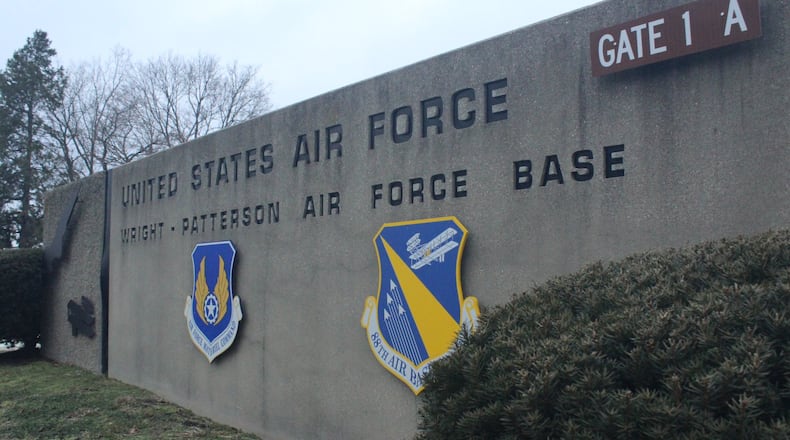Ohio and Dayton leaders had been building a case for bringing Space Command to Wright-Patt since May when the Air Force announced it was accepting nominations for the headquarters from U.S. communities.
“We’re disappointed Ohio didn’t make the list of finalists to host U.S. Space Command,” said Jeff Hoagland, president and chief executive of the Dayton Development Coalition. “I’m proud of our Ohio team and the outstanding case they made on behalf of the region and the state. As we’ve seen with the recent announcement to locate the National Space Intelligence Center at Wright-Patt, the Dayton region’s workforce, quality of life, and strong support for our military families makes it an ideal location for Air Force, Space Force and Department of Defense missions. Ohio has outstanding resources for space-related national defense activities and we will continue aggressively seeking new opportunities to build on those missions.”
Ohio Gov. Mike DeWine sent a letter to the assistant secretary of the Air Force in June endorsing the nomination of Wright-Patterson and the state for command. Another letter signed by 22 area mayors and four county commission presidents that supported the Dayton region’s consideration for the headquarters was also submitted.
U.S. Space Command was created by President Donald Trump in 2018. While U.S. Space Force headquarters has been —and will remain — in the Pentagon, U.S. Space Command has been temporarily located in Colorado Springs, Colorado until a new location is named.
“The Department of the Air Force evaluated each location and will now conduct both virtual and on-site visits at each candidate location to assess which location is best suited to host the U.S. Space Command Headquarters,” said Ann Stefanek, an Air Force spokeswoman. “This assessment will be based on factors related to mission, infrastructure capacity, community support, and costs to the Department of Defense.”
Competing for the command and its 1,400 good jobs was considered a longshot for Dayton. The Air Force said bases in 24 states were considered.
“Dayton clearly is an outlier in the competition for the new Space Command headquarters,” John Boyd, owner of Princeton, N.J.-based Boyd Co., a national location consulting firm, told the Dayton Daily News in May.
The Dayton area boasts impressive intellectual capital, Boyd said, but added it probably would not be enough.
“Only four markets in the nation have more science and engineering graduates in the labor market,” Boyd said. “How many executives know that right now? Not enough.”
Among the criteria laid out by the Pentagon in its search for a Space Command headquarters: Communities that are within 25 miles of a military base, within the top 150 most populous “metropolitan statistical areas,” and score at least 50 out of 100 points on the American Association of Retired Persons’ Livability Index, among other criteria.
Dayton has Wright-Patterson and as of July 2019, the Dayton-Kettering MSA was ranked at 107. And according to the AARP Index, the Dayton area scores a 53.
Boyd expected California and Florida — with the latter state’s “Space Coast” — to emerge as the top contenders for the headquarters.
Dayton advocates believed the case for Wright-Patterson was straightforward: It’s already home to one of the nation’s largest and most important Air Force bases, as well as the National Air and Space Intelligence Center, also known as NASIC, whose work is important both to the Air Force and Space Force.
The region is home to 30,000 military and civilian employees and a tight-knit community of contractors, all of whom work together to arguably create the future of the Air Force.
Other strengths include Dayton’s lower cost of living, lower cost of travel, and proximity to the East Coast, closer to the Pentagon and Air Force decision-makers, advocates say.
“But really I think the strongest thing we bring is the workforce,” Elaine Bryant, executive vice president for defense and aerospace at the Dayton Development Coalition, told the Dayton Daily News. “We have the ability to get the technical, the leadership, the managerial workforce that is needed to run this operation.”
On Wednesday, Gen. John Raymond, chief of space operations at U.S. Space Force, confirmed to U.S. Rep. Mike Turner, R-Dayton, that a new National Space Intelligence Center will be located at Wright-Patt.
“I want to thank Gov. Mike DeWine for his leadership and partnership, which helped the Space Force confirm its intent to place the National Space Intelligence Center at Wright-Patt. Pursuing Space Command was necessary to protect NASIC and broaden the intelligence mission at the base,” Turner said.
Michelle Martz, chief of public and legislative affairs for NASIC, said the new National Space Intelligence Center will be comprised of two squadrons transferring from NASIC.
“They will continue to work side-by-side with their counterparts at NASIC, just as they do today, working together to deliver unique collection, exploitation, and analytic capabilities to the nation,” Martz said. “A number of NASIC personnel transferred to the USSF (U.S. Space Force) in September, and more will transfer in the coming months.”
In time, new jobs are to be expected with the new center, Turner said.
“When Space Force was formed, our biggest threat to Wright-Patterson Air Force Base was that NASIC may be broken up,” said Turner, who is a member of the House Armed Services Committee and related subcommittees. “Our goal was to ensure that not only NASIC would stay intact, but that the mission at Wright-Patterson Air Force Base would grow to include space intelligence for Space Force.”
Space Force and Space Command are not the same thing. Space Force is the nation’s newest military branch. Space Command is one of 11 unified combatant commands. Space Force will have a role in equipping Space Command for its mission. Space Force is under the Air Force umbrella, a relationship analogous to the relationship between the Marine Corps and the U.S. Navy.
Todd Harrison, director of the Aerospace Security Project for the Center for Strategic and International Studies, told the Dayton Daily News that Peterson Air Force Base in Colorado Springs, Colo. will likely keep the command.
“The front runner is clearly Colorado, and I say that because that’s where the work is already done,” Harrison said.
To move Space Command HQ anywhere other than Peterson would involve substantial cost, Harrison said. “We’re talking on the order of a billion dollars,” he said.
A new headquarters would have to build an array of facilities and infrastructure to handle the command’s duties, facilities that can handle plenty of classified activities, data lines, satellite communication equipment and more, he said.
“All of that stuff is already in the region around Peterson Air Force Base and Colorado Springs, because they already do the job there,” Harrison said.
About the Author

